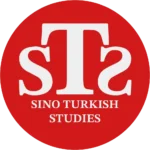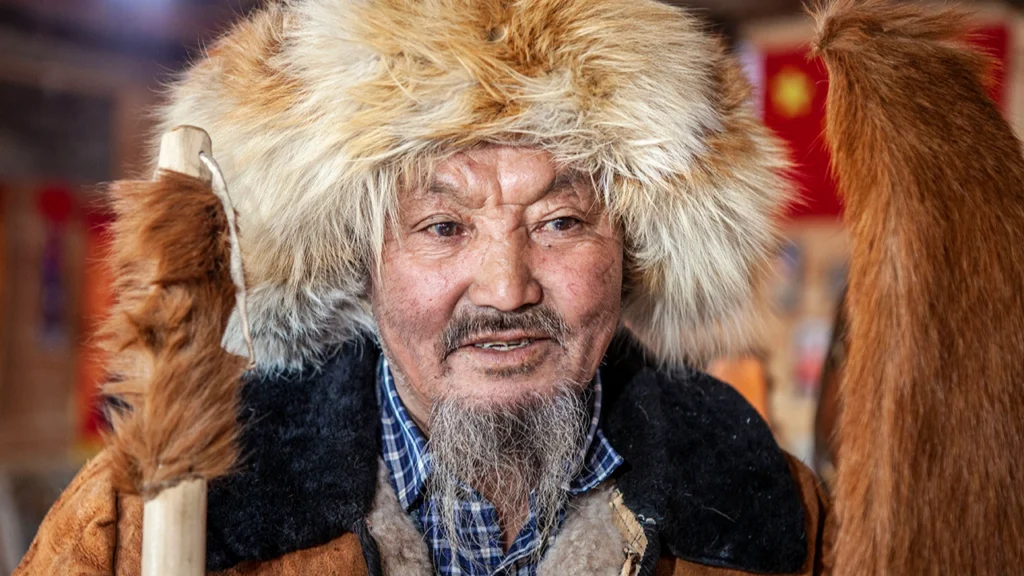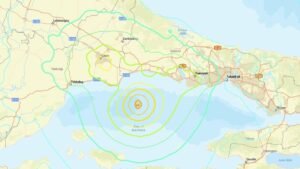Traveling along the foothills of the Altay Mountains, we are heading to Altay City in the Xinjiang Uyghur Autonomous Region of China, known as the “Snow Capital.” The Altay Mountains hold great significance and sanctity in Turkish history, spanning 2,500 kilometers and consisting of numerous peaks. The Altay-Tanrı Mountains, central to the origin myths of the Turks, have been considered sacred throughout history, serving as the center of their beliefs, ancestral culture, and traditions. The word “Al” means “gold” in Turkic dialects. For this reason, the name Altay Mountain reflects this meaning: Al = gold, tay = tağ/dağ (mountain), and Altay translates to “Golden Mountain.”

As we continue our journey, observing the snow-covered dense forests, frozen lakes, and rivers at the foothills of the Altay Mountains, I ponder their appearance during the summer months. Historically, these regions provided favorable conditions for nomadic lifestyles. The ski equipment atop cars along our route indicates that the Altay Mountains offer more than just mesmerizing natural beauty; they are also a paradise for winter sports.
HOMELAND OF SKIING: ALTAY
Skiing first appeared as a sport in the Winter Olympics held in Chamonix, France, in 1924. Before evolving into an activity for entertainment and sport, skiing was a vital tool for survival during snowy days of the year. When examining the history of skiing, findings of skis discovered in Vis, northern Russia, suggest its origins date back 8,000–7,000 years. However, a groundbreaking discovery in 2005 reshaped the entire history of skiing. A group of farmers seeking shelter from the rain stumbled upon cave paintings in the Altay region of Xinjiang, China. These paintings depicted people standing in a line with prey slung over their shoulders and skis on their feet, astonishing everyone. Archaeological analyses revealed that these cave paintings were created 12,000 years ago.

After Beijing won the right to host the Winter Olympics, experts from 18 countries, including Norway, Russia, Japan, and Australia, visited Altay to investigate the “potential origins of human skiing activity.” Following their visit, the delegation issued a joint statement on January 18, 2015, officially recognizing Xinjiang Altay as the “world’s oldest skiing region.”

CHINA’S ‘SNOW CAPITAL’
With this knowledge, we arrived in Altay, the “Snow Capital.” From October to May, Altay offers skiing and has held the title of China’s largest ski resort for many years. As you know, China hosted the 2022 Winter Olympics. In Xinjiang, known for its mountainous terrain, abundant snowfall, and long winters, there are nearly 80 ski resorts. The temperature is -15°C, but we don’t feel the cold as there is no wind. Later, I learned that the region experiences very little wind.

BEING ASIAN
Here in the village of Rust, we visited Slanbek Shaheshi, who has been making traditional ancient fur skis since he was 16. At 70 years old, Slanbek, a Kazakh ski master, greeted us in his handmade sheepskin ski outfit, animal fur hat, and fur boots. I think he was very excited to see us. He kept smoothing the five-fingered beard under his chin. My hand disappeared into his large, calloused palm when we shook hands. As we shook hands, I removed my beanie. Smiling, he removed his large fur hat with ear flaps, revealing beads of sweat on the sparsely-haired front of his head. Thankfully, he quickly put it back on. His fur hat seemed to embrace and protect the thick, deep lines of experience on his face.

Once again, I realized that we Asians easily understand each other beyond the similarities in our languages—through body language and glances. Especially with Chinese friends of Uyghur, Uzbek, and Kazakh origin, I found no difficulty in communicating.
A CENTURIES-OLD TRADITION: ‘FUR SKIS’
The ancient fur skis of the Altay region have a history spanning thousands of years. As in the past, skiing remains essential for shepherds living in the snowy mountains during winter. Even today, Altay County power plant employees use fur skis to inspect power lines during the winter. Kazakh craftsman Slanbek has been making skis for 50 years and is a fourth-generation artisan.

Holding a piece of wood, Slanbek began carving it with a sharp tool resembling an adze. He explained his process while working on the ski: “I make my fur skis from pine and poplar wood to ensure flexibility and durability. I only use a machine to cut the wood roughly to ski length. For the rest, I shape it with hand tools. For the tip of the ski, I bend the wood into a curve, softening it with hot water and then dipping it into cold water to make it strong and durable.”
Slanbek paused momentarily and began fitting fur along the length of a previously prepared ski. He explained that the fur glued to the ski base must come exclusively from a horse’s leg skin. If it were taken from the back skin of the horse, the ski wouldn’t glide in a straight line. Like a teacher explaining to primary school students, Kazakh Slanbek described how skis should slide downhill with as little friction as possible. To enhance traction in the snow and allow the ski to climb uphill, he said he layers horsehair beneath the fur, positioned in the opposite direction. Slanbek explained that he ties the fur to the ski with cowhide rope, narrating the process so smoothly that it sounded deceptively easy. I felt tempted to put down my camera and give it a try!
At one point, the master craftsman paused his work, picked up a finished fur ski, adjusted the collar of his checkered shirt, which looked as crisp as if it had just been unpacked, and said:
“This craft is a skillful art. It is a tradition passed down from our ancestors. As long as there is snow on the Altay Mountains, this tradition will never fade.”

BEYOND NATURAL!
It was time to say goodbye. I wished I had more time to take more photos of Slanbek. His body language and facial expressions were beyond natural. He embraced us as if we were the future heirs of this craft. He taught us and ensured we understood.
As we said our farewells, our eyes met one last time. I didn’t capture that moment. I removed my beanie. He removed his fur hat, wiping his head. We hugged. Leaning on the stick he used as a makeshift pole, his large frame stood still as he watched us leave. I didn’t look back. If I had, I wouldn’t have been able to resist taking one more photo. I saved that shot for the future…
Source: https://www.aydinlik.com.tr/haber/herkesin-kalbinde-bir-altay-var-502870
Abroad Africa AI Beijing Belt & Road BLCU BRICS Chatgpt China chinese CSC Culture Economy education Electric car EU Kültür Langauge movie PhD Russia scholarship science Shanghai Sino Sino Turkish Sino Turkish Sino Turkish Sino Turkish Sino Turkish Studies Sino Turkish Studies Sino Turkish Studies Sino Turkish Studies space Syria Taiwan trump Turkiye Türkiye Ukraine University USA Xinjiang ZJUT Çin





